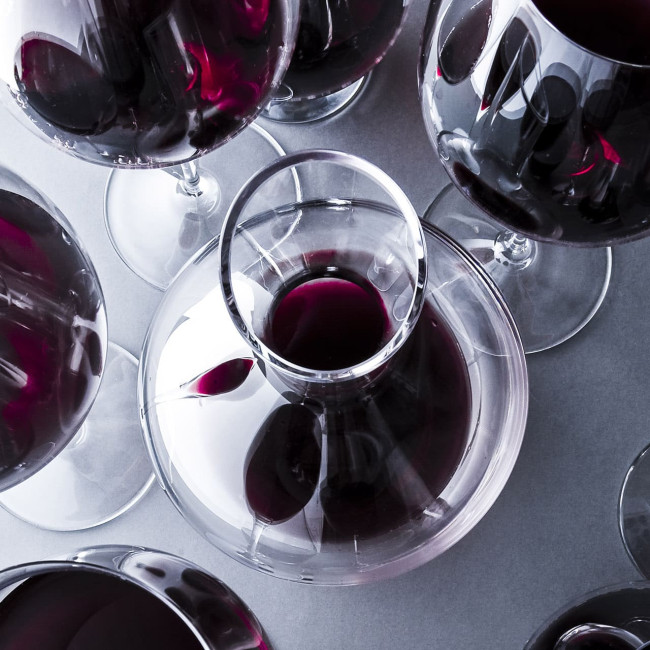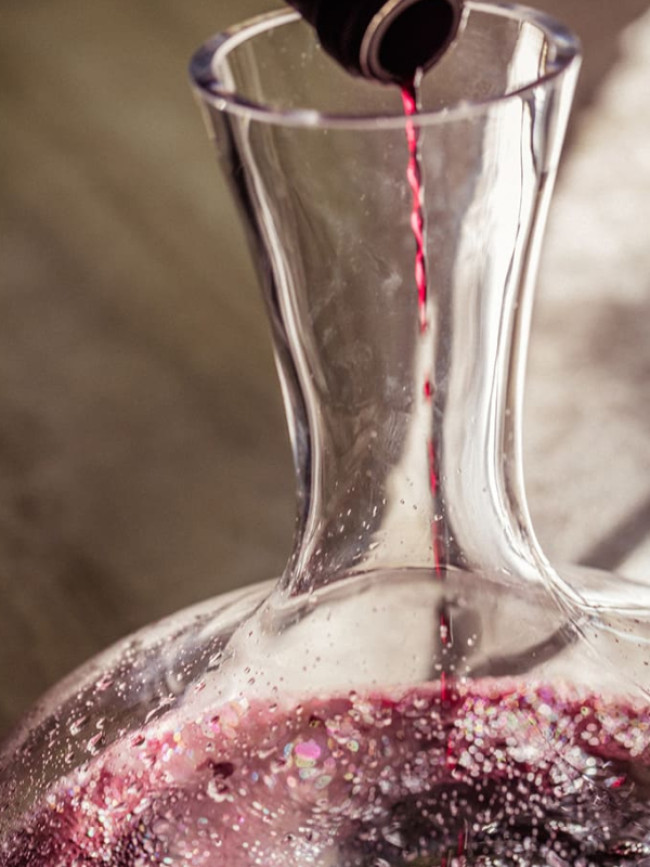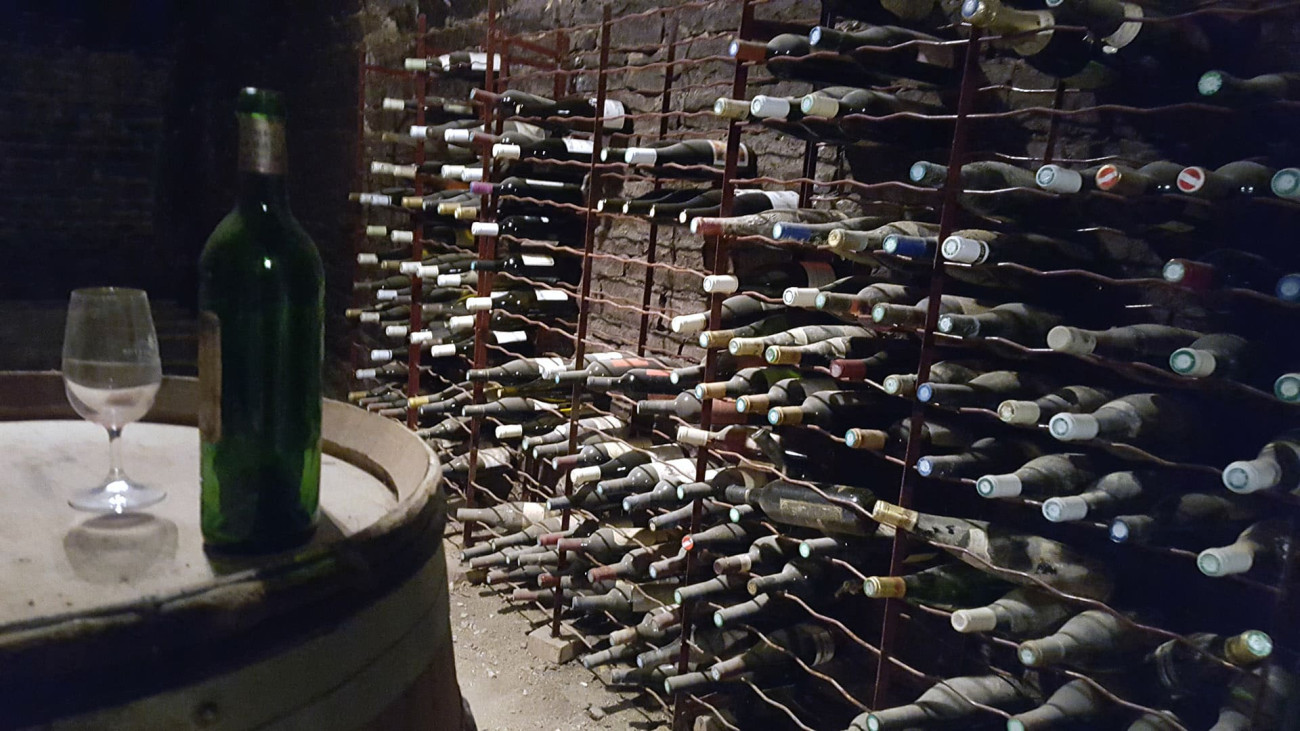
Often an object of intimidation, a decanter is an important and rewarding tool. When done correctly, decanting a wine can elevate even the most average wine experience.
However, it’s not always easy to know whether or not to decant. You need consider the changes being triggered by the process, along with keeping a few guidelines in mind.
For what reasons? Which wines? For how long? Done correctly, decanting a wine can enhance the wine experience but it’s not always easy to know whether or not to decant.
There are two main reasons for decanting wine. The first is physical—to separate clarified wine from solids that have formed during aging. The second is the effect of oxygen, which releases certain compounds bound within the bottle. Both have an effect on our perception of flavor, texture and aroma.
Contrary to popular belief, decanting older wines is far from an ironclad rule.
Decanting for sediment.
Dr. Gavin Sacks, an associate professor at Cornell University’s school of Department of Food Science, notes that separating clarified wine from the solids suspended in the bottle was the original motivation behind decanting wine.
“Decanting goes back to alchemy, where it was used to describe the process of removing the liquid part of a mixture from the solids,” says Sacks.
Wine today is more reliable than ever. We have the ability to filter with precision and prevent certain solids from forming at all, but getting rid of sediment will always be a concern.
Sediment can be very fine and has a tendency to deaden flavor and expression. Sometimes a winemaker will choose to bottle something with residual sediment, but most traditionalists balk at any kind of haze or cloudiness. In the holistic act of appreciating wine, visual irregularities are bound to make a mark on how we first perceive a wine.
But before you can even make the call to decant, you need to prepare the wine itself.
If you’re pulling a wine from horizontal cellar storage, you ideally want to give the bottle a couple days to sit vertically so the sediment has time to shift to the bottom without being incorporated into the wine.

“The important thing with a red wine is to make sure that the sediment stays at the bottom of the bottle, so you can stop decanting when you get sediment coming into the neck,” says Mannie Berk, founder of The Rare Wine Co., an importer and merchant based in California that specializes in old vintages.
If you’re pulling a wine from horizontal cellar storage, you ideally want to give thebottle a couple days to sit vertically so the sediment has time to shift to the bottom without being incorporated into the wine. Even just a couple of hours is better than nothing.
This also makes it unwise to serve an aged wine that was recently transported. Motiondisrupts the solids in a way that can’t be corrected without an adequate resting period.
If you’re going straight from cellar to table, be conscious of how the sediment shifts in the process. Berk says to “tilt it to vertical, stand it up in your hands very slowly so that whatever sediment is resting on that side basically slides to the bottom, and then [carry] the bottle standing up.”
Hold a light under the neck of the bottle where it meets the shoulder so you can payattention to the clarity of the wine. Stop pouring the moment you notice sediment clouding up the wine. The amount of wine you leave in the bottle will vary dependingu. on the amount of sediment. Preparing your bottle ahead of time will allow for the least amount of waste.
Decanting for oxygen.
When you pour wine from bottle to decanter, air makes its way into the wine. But ifyour goal is to encourage the wine to “open up,” allowing it to rest after pouring can cause certain additional changes to take place.
As explained by Dr. Sacks, there are a few processes happening simultaneously when wine is in the presence of air for over an hour.

First is the escape of volatile compounds. The two main culprits in wine are carbon dioxide and hydrogen sulfide. Obviously recognizable in sparkling wine, carbon dioxide is also present in still whites, where unnoticed doses of the prickly, acidic gas provide extra lift to the flavor of certain white wines while bringing preservative qualities.
This is one reason we often don’t decant white wine. But in most still reds the presence of CO2 can make the wine more tannic and is usually considered a fault.
H2S, or hydrogen sulfide, is referred to as a “reduced aroma.” It pops up sometimes in red wines that have been produced under hermetic conditions and sealed with very tight closures. This is especially common with Syrah.
If you notice an aroma of rotten eggs or struck match upon opening, it’s generally a sign of hydrogen sulfide. Thirty minutes to an hour in a decanter can help release those compounds, allowing you to reassess the wine for its other qualities. Further agitation, like swirling, or pouring the wine back and forth, can help if you are in a rush, though this is only recommended for sturdy wines.
Aerating wine to allow oxygen to work its magic.
Exposure to oxygen leads to reactions in the wine, both good and bad, many of which will take several hours (or days) to fully develop. It’s why a wine will initially open up pleasantly before an eventual deadening of flavor after being exposed for too long.
Among the first things that react with oxygen are sulfur-based compounds. However, sometimes those are aromas we don’t want to lose. For example, sulfuric compounds give Sauvignon Blanc its citrusy, tropical aromas, and are easily lost to oxidative reactions. Thankfully, this isn’t as much of a concern with red wines, as many of their compounds are not as sensitive to air.

Should all old wines be decanted? Do older wines need more time to decant?
Contrary to popular belief, decanting older wines is far from an ironclad rule. Burgundy, for example, is known for its delicacy and the question of whether or not to decant is often hotly debated between experts. However, older vintages of Nebbiolobased wines, like Barolo and Barbaresco, along with Rioja and other full-bodied wines, are generally strong candidates for decanting.
If the initial taste of a wine is promising, decanting may not be necessary. Carefully pour the wine directly from the bottle into the glass. If you do choose to decant, use a carafe with a narrow base that offers less opportunity for air to integrate and alter the wine further.
One common belief is that the older a wine is, the longer it can take to open up. But Mannie Berk posits something a little more specific.
“Wines that are subjected to a lot of oxygen before they’re bottled tend to respond well to oxygen once the bottle is opened,” says Berk.
For Madeira, decant a minimum of one day for every decade of bottle age.
Those Barolos, Barbarescos and Riojas that respond well to decanting? For the most part, they’re vinified in a way that involves heavier exposure to oxygen.
The most extreme example Berk offers is Madeira, a wine that sees both oxygen and heat in production, and is famously said to last indefinitely after the bottle is opened. “If Madeira’s been in bottle for a long time, you want to decant it possibly for a few days to a few weeks before you drink it, because it needs to go from being in an oxygen deprived environment to one where it’s back to enjoying oxygen…that’s what it really likes,” he says.
Berk’s rule for Madeira? Decant a minimum of one day for every decade of bottle age.

How do you know when a wine is done decanting?
Lebanon’s Château Musar winery is known for releasing wines at peak maturity, having maintained an extensive library of bottles going back decades, with offerings from the 1940s and ‘50s still for sale.
Marc Hochar, whose family founded Musar in 1930, says that decanting is critical to their wines reaching full expression. He recommends decanting a minimum of 30 minutes, but warns that the process of finding a wine’s best moment isn’t as easy as setting a timer.
“In order to enjoy the peak of the wine after you have opened a bottle, you have to[taste] its evolution from the moment you open it. [You need] to understand where it started and where it finished… It is like watching an athlete at the top of his career,”says Hochar. “If you were to understand where and when he started his training as a child, how difficult was the path to get to the top, you would respect his achievement even more and see it in a different light.”.
Decanting isn’t just the act of pouring a wine into a fancy vessel. It’s a powerful tool to keep in your arsenal, one that can vastly expand what you get out of this living beverage.
Although there are effects and reactions we can identify, there’s not alway one answer to whether a particular bottle should be decanted. All you can do is taste, and ask yourself if there’s something else to be gained from the process.

![[ Deco trend ] Creation of a wine room: customised design for wine enthusiasts [ Deco trend ] Creation of a wine room: customised design for wine enthusiasts](https://www.eurocave.com/media/cache/app_shop_card_universe_desktop/35/ff/c1366fc451bcc4d0c5bbd024b725.jpg)
![[ Understanding wine ] What is a cru, really ? [ Understanding wine ] What is a cru, really ?](https://www.eurocave.com/media/cache/app_shop_card_universe_desktop/a5/97/c469c9b9661a20a2c00f9da6edee.jpg)
![[ Deco trend ] Sideboard furniture: The decor trend inspiring wine cabinets. [ Deco trend ] Sideboard furniture: The decor trend inspiring wine cabinets.](https://www.eurocave.com/media/cache/app_shop_card_universe_desktop/31/e3/78d0cd0ee6769f3637d261154a6f.jpg)